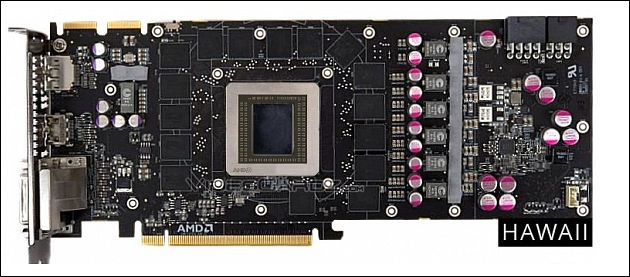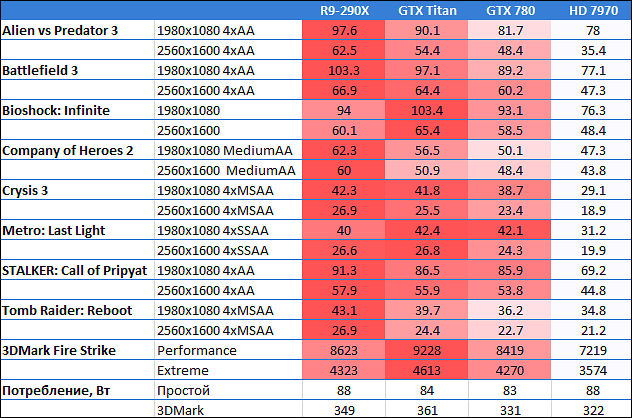
It allows to keep PV going, with more focus towards AI, but keeping be one of the few truly independent places.
-


- CPU clock - 1 GHz
- RAM - 5 GHz
Must be most powerful single GPU card for now.

 radeon.jpg630 x 277 - 53K
radeon.jpg630 x 277 - 53K
 radeon1.jpg632 x 418 - 154K
radeon1.jpg632 x 418 - 154K -
I'm a 3D graphics programmer by day and the Radeons consistently manage to get on my nerves. The drivers aren't quite right, especialy on the GL side and they seem to suffer all kinds of weird internal bugs. And now we're hearing about this mess: http://www.pcper.com/reviews/Graphics-Cards/Frame-Rating-Eyefinity-vs-Surround-Single-and-Multi-GPU-Configurations/Discov I have a dim view of AMD's graphics competence these days. I have a stack of 7970s (the relatively rare Eyefinity 6 models), as well as GTX Titan, 690, 780 cards. The NV units are the ones we rely on and trust.
-
I understand you concerns, but i think link provided is talking about very specific problem that most people will never see (just because they won't have Crossfire and especially with Eyefinity cards).
Plus we here talk mostly about using GPUs for NLEs, grading apps and such.
-
Radeon has also problems with DaVinci Resolve and limited support for After Effects :) So why to bother?
-
@tonalt, the Radeon's are looking like the future IMO. More and more Apps are coding for them and I think it's going to benefit all of us to have that competition. It wasn't good for Nvidia to have such a relative monopoly for NLE's. Better for us that AMD is in the mix too. Also every time they make a new top of the line it helps lower cost on the models below it. Good for us.
-
I agree that it's good to have competition, but it's because of gamers.
-
AMD (NYSE: AMD) today unveiled the AMD Radeon™ R9 290X, R9 290, R9 280X, R9 270X, R7 260X and R7 250 graphics cards, AMD's first GPUs in a new era of gaming defined by UltraHD displays, renewed vigor in game engine development, and a new generation of gamers that expect a more immersive entertainment experience. AMD also introduced the world to Mantle and AMD TrueAudio technology, the latest innovations that redefine the GPU by enabling both gamers and game developers with unprecedented audio and performance enhancements for compatible games1,2.
"The AMD Radeon R9 and R7 Series graphics cards are new GPUs for a new era in gaming," said Matt Skynner, corporate vice president and general manager, Graphics Business Unit, AMD. "This era is shaped by ultra-resolution gaming and an exciting new generation of highly-anticipated games like 'Battlefield™ 4.' But it's also an era shaped in a very powerful way by our own Unified Gaming Strategy; we've teamed up with the world's top game developers to establish a comprehensive portfolio of games that you can maximize to their full potential only with AMD Radeon™ graphics."
Mantle and Graphics Core Next: Simplifying Cross-Platform Game Development
The award-winning Graphics Core Next (GCN) architecture in the AMD Radeon R9 and R7 Series graphics cards continues to serve as a driving force behind the Unified Gaming Strategy, AMD's approach to providing a consistent gaming experience on the PC, in the living room or over the cloud - all powered by AMD Radeon graphics found in AMD graphics cards and accelerated processing units (APUs). The four pillars of the Unified Gaming Strategy - console, cloud, content and client - come together with the introduction of Mantle.
With Mantle, games like DICE's "Battlefield 4" will be empowered with the ability to speak the native language of the Graphics Core Next architecture, presenting a deeper level of hardware optimization no other graphics card manufacturer can match. Mantle also assists game developers in bringing games to life on multiple platforms by leveraging the commonalities between GCN-powered PCs and consoles for a simple game development process.
With the introduction of Mantle, AMD solidifies its position as the leading provider of fast and efficient game development platforms. Mantle will be detailed further at the AMD Developer Summit, APU13, taking place Nov. 11-13 in San Jose, Calif.
AMD TrueAudio Technology: World's First Programmable Audio Pipeline
AMD TrueAudio technology marks a new frontier in realism for PC gamers. AMD TrueAudio technology empowers game developers with a programmable audio pipeline on the GPU, inviting them to put their unique artistic fingerprint on in-game audio in the same way that the programmable graphics pipeline brought unfettered artistic vision to PC graphics. Enabled games can feature more realistic environmental dynamics, a richer tapestry of sound effects, breathtaking directional audio and more.
AMD TrueAudio technology enhances audio realism by simulating the human brain's perception of real-world sound, working in concert with the user's existing audio hardware to recreate a lifelike experience in upcoming games like "THIEF™" by Square Enix or "Lichdom" by Xaviant Games.
AMD Multi-Display Technology: Redesigned for Ultra-resolution Gaming
The arrival of the next-generation AMD Radeon graphics cards also marks a new chapter in AMD's historic support for stunning display configurations. AMD Radeon R9 and R7 Series graphics cards are made for gaming on UltraHD (3840x2160) displays, including support for non-tiled 2160p60 displays with a future AMD Catalyst™ driver release. In addition, gamers more accustomed to AMD Eyefinity multi-display technology will be freed to use virtually any combination of display outputs when connecting matching monitors to the DVI or HDMI® outputs on their system.
AMD Radeon R9 and R7 Series graphics cards will be available for purchase in the near future.
-
GPUs are expected to bring pressure on Nvidia to offer price cuts in late November and release 1-2 new GPUs to defend the US$149-249 segment, according to sources from graphics card players.
At least this is good news.
-
Some reviews
- http://www.tomshardware.com/reviews/radeon-r9-290x-hawaii-review,3650.html
- http://anandtech.com/show/7457/the-radeon-r9-290x-review
Expected final price is $549
Howdy, Stranger!
It looks like you're new here. If you want to get involved, click one of these buttons!
Categories
- Topics List23,991
- Blog5,725
- General and News1,353
- Hacks and Patches1,153
- ↳ Top Settings33
- ↳ Beginners256
- ↳ Archives402
- ↳ Hacks News and Development56
- Cameras2,367
- ↳ Panasonic995
- ↳ Canon118
- ↳ Sony156
- ↳ Nikon96
- ↳ Pentax and Samsung70
- ↳ Olympus and Fujifilm101
- ↳ Compacts and Camcorders300
- ↳ Smartphones for video97
- ↳ Pro Video Cameras191
- ↳ BlackMagic and other raw cameras116
- Skill1,960
- ↳ Business and distribution66
- ↳ Preparation, scripts and legal38
- ↳ Art149
- ↳ Import, Convert, Exporting291
- ↳ Editors191
- ↳ Effects and stunts115
- ↳ Color grading197
- ↳ Sound and Music280
- ↳ Lighting96
- ↳ Software and storage tips266
- Gear5,420
- ↳ Filters, Adapters, Matte boxes344
- ↳ Lenses1,582
- ↳ Follow focus and gears93
- ↳ Sound499
- ↳ Lighting gear314
- ↳ Camera movement230
- ↳ Gimbals and copters302
- ↳ Rigs and related stuff273
- ↳ Power solutions83
- ↳ Monitors and viewfinders340
- ↳ Tripods and fluid heads139
- ↳ Storage286
- ↳ Computers and studio gear560
- ↳ VR and 3D248
- Showcase1,859
- Marketplace2,834
- Offtopic1,320




